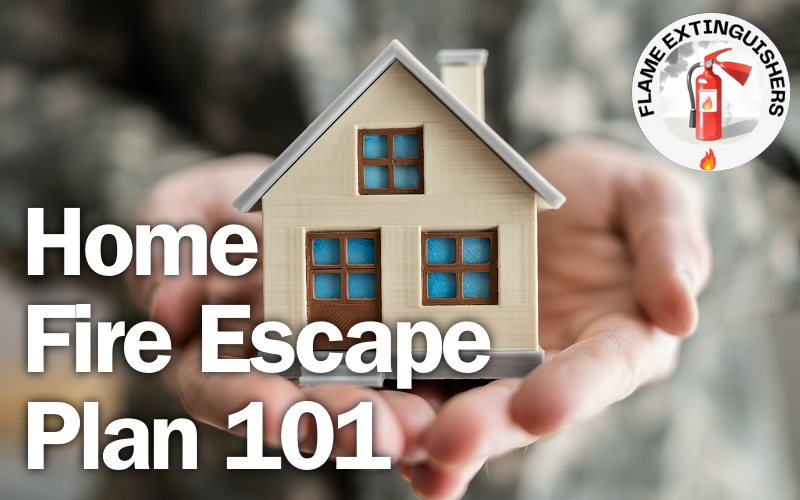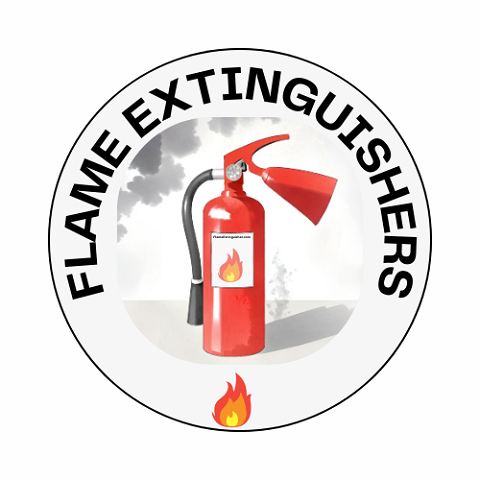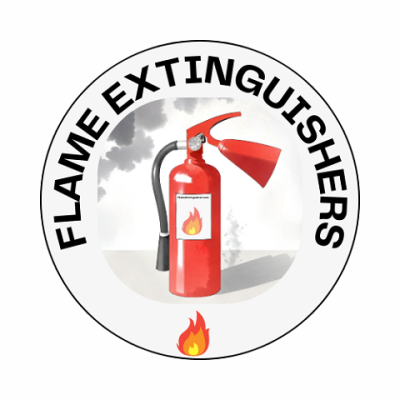Hey folks, Mike McCloud here, and today we’re diving into something crucial – your family’s safety. We all love our homes, but fires can happen anytime, anywhere. So, let’s talk about why having a solid home fire escape plan is as essential as that cup of coffee to kickstart your day.

Understanding the Risk:
Alright, let’s get real. Fires don’t give a damn about your plans. They happen when you least expect it – while you’re whipping up a gourmet meal, binge-watching your favorite show, or cozying up by the fireplace. Imagine this: you’re in the kitchen, frying up some bacon, and boom! The oil catches fire. It happens faster than you can say “extra crispy.”
Assessing Your Home:
Now, look around your place. Got a toaster? You’re staring at a potential fire starter. Let’s be smart about this. Identify those hazards, like frayed wires and overloaded power strips, and deal with them. And don’t slack on smoke detectors – they’re like the unsung heroes of fire safety.
Scenario time: You’re having a lazy Sunday, engrossed in a Netflix marathon. Suddenly, your smoke detector goes off. What do you do? Panic? Nah. You calmly check your kitchen, realize your popcorn ambitions went awry, and switch off the burner. Crisis averted.
Educating Family Members:
Kids can be like little fire-starters themselves, unintentionally. So, teach them the basics: stop, drop, and roll. Show them the superhero move of crawling low under smoke. And most importantly, make sure they know how to dial 911.
Scenario: Your kiddo, curious as ever, decides to play with matches. The living room is now a mini-inferno. Thanks to your teachings, your child stays calm, remembers the stop-drop-roll mantra, and gets out unscathed.
Emergency Contacts and Resources:
Now, you need backup. No, not the Avengers, but close enough. Emergency contacts are your lifeline. Make a list, stick it on the fridge – you know, where everyone checks for snacks.
Scenario: Your escape plan worked like a charm, but what if someone gets separated? That’s where your emergency contacts swoop in, ensuring everyone’s accounted for. Crisis averted, again.
Additional Safety Measures:
We’re talking about fortifying your castle here. Fire-resistant doors and windows aren’t just for show – they’re your first line of defense. And let’s talk about those flammable materials you’ve got lying around – the paint cans, gas canisters, or that old can of hairspray. Chuck ’em or store them safely.
Scenario: You’re in the garage, contemplating life while surrounded by paint cans and oily rags. Suddenly, you smell something funky. Your Spidey senses tingle, and you realize it’s a gas leak. Thanks to your clean garage and well-ventilated space, disaster is avoided once again.
Developing a Family Home Fire Escape Plan:
Alright, let’s get down to the nitty-gritty of creating a family home fire escape plan. It’s not just about drawing arrows on a piece of paper; it’s about a well-coordinated, rehearsed strategy that could be the difference between chaos and calm during an emergency. Here’s your step-by-step checklist for a rock-solid plan:

Map It Out:
- Identify all possible exits from each room.
- Designate primary and secondary escape routes.
- Ensure windows and doors are easily accessible and functional.

Family Meeting Point:
- Choose a location outside the home as a meeting point.
- Ensure it’s a safe distance away from the house.
- Make sure everyone in the family knows the spot.

Assign Responsibilities:
- Designate specific tasks to each family member during an emergency.
- Responsibilities may include assisting young children, grabbing emergency supplies, or even being in charge of pets.

Practice Regularly:
- Conduct fire drills at least twice a year.
- Simulate different scenarios to ensure everyone is familiar with the escape plan.
- Time each drill to identify areas for improvement.

Emergency Contact List:
- Compile a list of emergency contacts and keep it visible.
- Include local fire departments, neighbors, and relatives.
- Ensure everyone in the family knows how to use it.

Smoke Detectors:
- Install smoke detectors in key locations, including bedrooms and common areas.
- Test detectors monthly and replace batteries at least once a year.
- Invest in smart detectors for real-time alerts on your smartphone.

Fire Extinguishers:
- Place fire extinguishers in the kitchen, garage, and other high-risk areas.
- Ensure everyone in the family knows how to use them.
- Schedule regular checks to confirm they are fully operational.

Escape Tools:
- Consider investing in escape tools like emergency ladders for multi-story homes.
- Place these tools in easily accessible locations.
- Familiarize everyone with their use during drills.

Fire-Resistant Safe:
- Keep essential documents (IDs, insurance policies, etc.) in a fire-resistant safe.
- Ensure the safe is easily accessible during an evacuation.
- Communicate its location to all family members.

Education for Kids:
- Teach children about fire safety basics – stop, drop, and roll.
- Make sure they know how to call 911 and give their address.
- Instill the importance of following the escape plan.

Additional Safety Measures:
- Install fire-resistant doors and windows.
- Regularly inspect and maintain heating systems and electrical appliances.
- Dispose of flammable materials properly.
By checking off each item on this list, you’re not just creating a plan; you’re building a fortress of preparedness. Remember, a well-prepared family is a safe family. Stay informed, stay vigilant, and let’s ensure your home is ready for anything. 🔥🏠 #SafetyFirst
Fire Prevention Products:
Okay, now let’s talk tools of the trade. Here are some must-haves to keep your home safe from fires:
- Smart Smoke Detectors:
- Power Surge Protectors
- See our guide to the Best Power Surge Protectors
- Fire-Resistant Safe:
During a Fire:
- Fire Extinguishers:
- See our guide to the Best Fire Extinguishers
- Escape Ladders:
- Emergency Fire Blanket:
NFPA – Home Fire Escape Plan Video
Conclusion:
So, there you have it – a fire escape plan isn’t just a piece of paper. It’s your superhero handbook, ready to swoop in when chaos reigns. Fires don’t wait for an invitation, so let’s not wait to be caught unprepared. Take action, educate your family, and sleep peacefully, knowing you’ve got a plan. Because when it comes to fire safety, being prepared is way better than panicking. Stay safe, folks!

